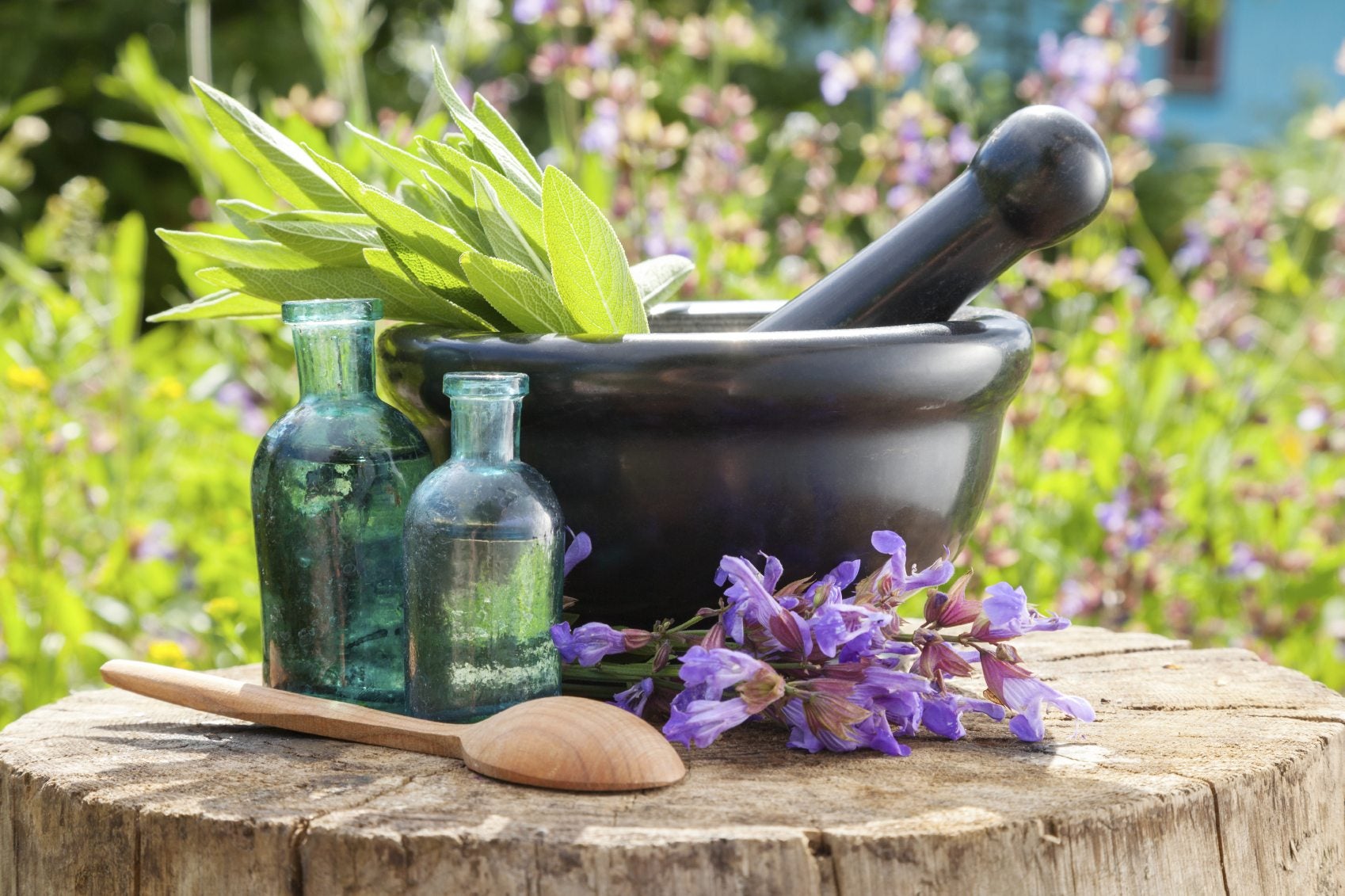Healing Herb Plants – Tips On Growing A Medicinal Herb Garden


The kitchen herb garden, or potager, as it’s known in France, is traditionally a small section of the garden, or even a separate garden, where culinary and healing herb plants are grown along with fruits, veggies, and ornamentals. Usually, these herb gardens are carefully laid out to provide easy access, but also aesthetic value. Read more to learn about plants with healing effects and designing a medicinal herb garden.
Using Medicinal Herbs in Gardens
For centuries, in almost every culture, the herb garden has held a special place in the garden. Long before walk-in clinics and huge medical complexes, people had to grow and prepare their own medicines. Healing herb plants were often grown in sacred gardens that not only provided healing from the plants themselves but also to be aesthetically pleasing to the senses. Herbs were arranged by size and texture, often in geometric patterns, along with fruit and vegetable espaliers. These ancient herb gardens ranged from simple cottage gardens to the formal knot gardens of England. Most home gardeners don't have the room or the time to create and maintain a formal knot garden in their yard. However, you can incorporate healing herb plants into your existing landscape and flower beds. The next section will cover common healing herb uses, as well as the role they can play in the landscape.
Plants with Healing Effects
Here are some commonly used healing herb plants:
Lavender
Who can resist the relaxing scent and quaint charm of a Lavender border? Hardy in zones 5-9, the bluish hue of Lavender’s leaves and pale, purple flowers are an excellent candidate for defining the lines between lawn and garden. A lavender bordered sidewalk or path has an inviting feel and soothing scent. Lavender is used medicinally to cure headaches, insomnia, relieve tension, and as a natural insect repellent. As a growing plant in the garden, it gives off a beautiful, calming scent and can be trimmed to promote bushier growth or shaped to form knots or topiaries. Use leaves and flowers in teas and lemonade.
Thyme, Viola, Chamomile
Use low-growing common healing herbs like Thyme, Violas, or Chamomile for useful and attractive ground cover.
- Thyme looks and smells wondrous, cascading over retaining walls or nestled between pavers for a natural-looking garden path in full sun to part shade. Hardy in zones 4-11, Thyme is used to treat coughs, colds, congestion, headaches, insomnia, and cuts. Thyme is also used in oral and skincare.
- Violas are hardy in zones 2-9 and seem happy to grow anywhere from full sun to full shade. With most Violas only reaching 6” (15 cm.) tall, they make excellent, consistently blooming ground overs. The leaves and flowers of Violas are used to treat eczema, acne, swollen glands, cold symptoms, migraines and headaches, asthma, and arthritic pain.
- Chamomile is an annual that will reseed itself in most zones. The dainty, white flowers and light green, ferny foliage, make low-growing chamomile a beautiful ground cover or border for cottage gardens. Chamomile is used to treat insomnia, headaches, tension, anxiety, and also used for skin and hair care.
Lemon Balm, Feverfew, Sage
If you are looking for medium-height accent plants with medicinal value, look no further than Lemon Balm, Feverfew, and Sage.
- Lemon Balm is hardy in zones 4-9 and is mound-forming, growing to about 12”-18” (30.5 to 45.5 cm.) high. Lemon Balm is used to treat anxiety, insomnia, cuts and bruises, insect bites, and upset stomachs.
- Feverfew is a 2-foot (0.5 m.) tall perennial in zones 5-9 covered with dainty, daisy-like flowers in full sun to part shade. Feverfew flowers are used for headaches and migraines, arthritis pain, and skin irritations.
- Also growing about 2 feet (0.5 m.) tall and hardy in zones 4-9, sage makes a lovely, mid-sized landscape accent plant for full sun. Sage is used for colds and sore throats, dental problems, cuts, skin and hair care, and to relieve symptoms of PMS and menopause. Sage is also a natural deodorant and insect repellent.
Dill and Rosemary
For healing herb plants that add a splash of drama to the landscape, try Mammoth Dill or Rosemary.
Sign up for the Gardening Know How newsletter today and receive a free copy of our e-book "How to Grow Delicious Tomatoes".
- Mammoth Dill is a tall annual that will reseed itself profusely. The feathery foliage and lime green umbel flowers have quite a stunning effect at the back of a flower bed. Dill flowers and foliage are used to settle the stomach and treat muscle cramps.
- Rosemary comes in upright or creeping forms. In zones 8-10, it is a sun-loving evergreen. In any zone, its dark green, pine-like foliage makes a beautiful accent. Rosemary is used medicinally to treat headaches, arthritis, coughs, colds, congestion, bronchitis, and baldness. Rosemary is also used to increase memory and focus, improve circulation, and as a natural insect repellent. You will find Rosemary in many hair and skin care products due to its regenerative effects on hair and skin.
Disclaimer: The contents of this article are for educational and gardening purposes only. Before using ANY herb or plant for medicinal purposes, please consult a physician or a medical herbalist for advice.

Darcy is a former contributor to Gardening Know How. She is a professional landscape designer and gardening writer with experience in plant sales. An avid gardener, Darcy has a passion for sharing practical tips to help others grow.